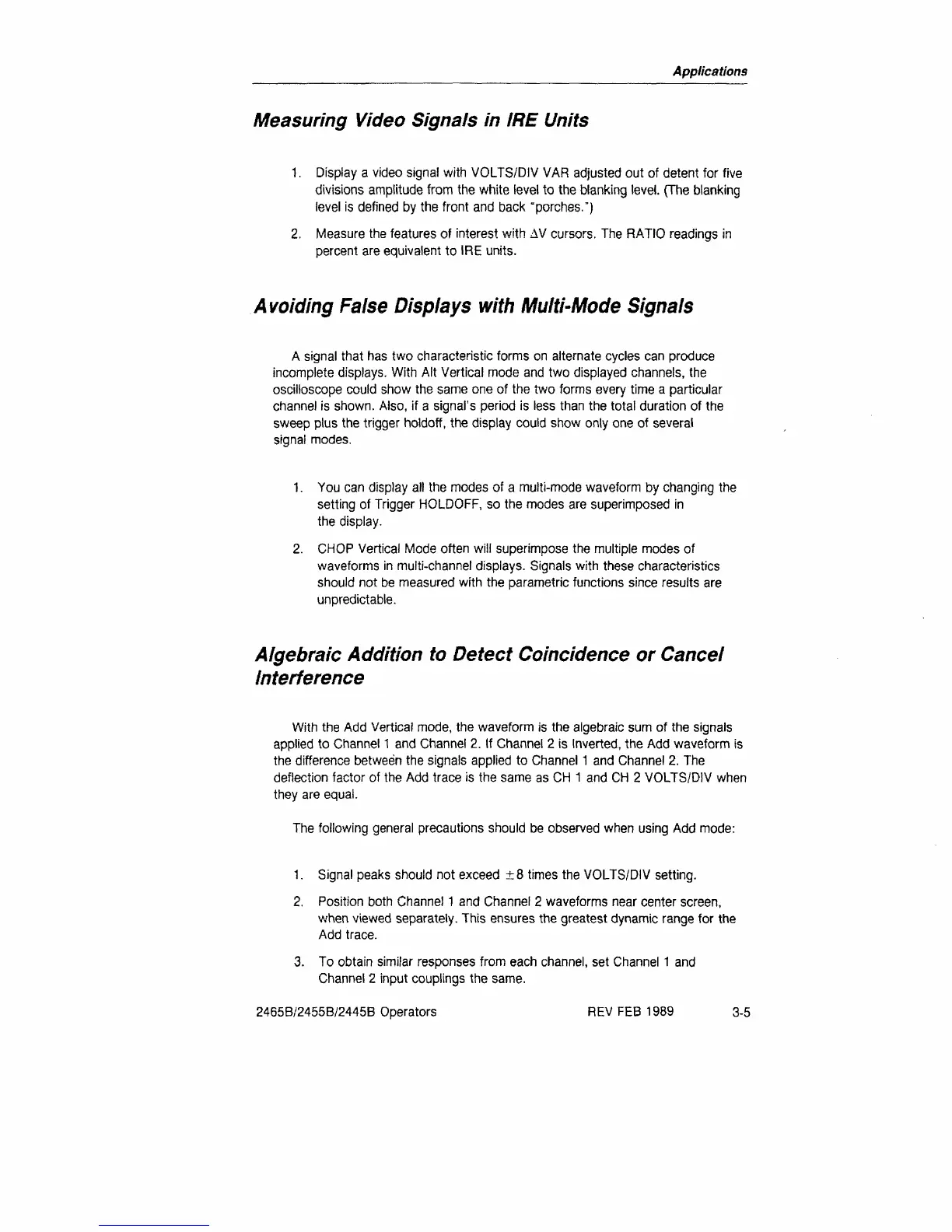Applications
Measuring
Video Signals
in IRE
Units
1.
Display a video signal with VOLTS/DIV VAR adjusted out of detent for five
divisions amplitude from the white level to the blanking level. (The blanking
level is defined by the front and back "porches.")
2.
Measure the features of interest with AV cursors. The RATIO readings in
percent are equivalent to IRE units.
Avoiding
False
Displays with Multi-Mode Signals
A signal that has two characteristic forms on alternate cycles can produce
incomplete displays. With Alt Vertical mode and two displayed channels, the
oscilloscope could show the same one of the two forms every time a particular
channel is shown. Also, if a signal's period is less than the total duration of the
sweep plus the trigger holdoff, the display could show only one of several
signal modes.
1.
You can display all the modes of a multi-mode waveform by changing the
setting of Trigger HOLDOFF, so the modes are superimposed in
the display.
2.
CHOP Vertical Mode often will superimpose the multiple modes of
waveforms in multi-channel displays. Signals with these characteristics
should not be measured with the parametric functions since results are
unpredictable.
Algebraic Addition
to Detect
Coincidence
or
Cancel
Interference
With the Add Vertical mode, the waveform is the algebraic sum of the signals
applied to Channel
1
and Channel 2. If Channel 2 is Inverted, the Add waveform is
the difference between the signals applied to Channel
1
and Channel 2. The
deflection factor of the Add trace is the same as CH 1 and CH 2 VOLTS/DIV when
they are equal.
The following general precautions should be observed when using Add mode:
1.
Signal peaks should not exceed ±8 times the VOLTS/DIV setting.
2.
Position both Channel
1
and Channel 2 waveforms near center screen,
when viewed separately. This ensures the greatest dynamic range for the
Add trace.
3. To obtain similar responses from each channel, set Channel
1
and
Channel 2 input couplings the same.
2465B/2455B/2445B Operators
REV FEB 1989 3-5

